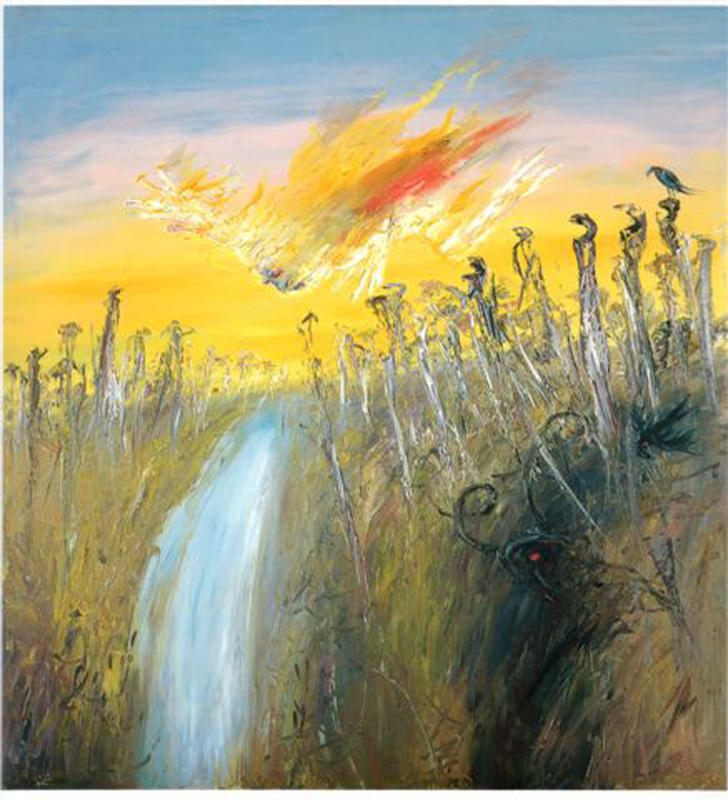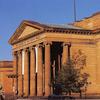More about Nebuchadnezzar on Fire Falling over a Waterfall

Sr. Contributor
Nebuchadnezzar found himself at the mercy of Old Testament God justice...but he wasn’t set on fire.
In the book of Daniel, Nebuchadnezzar was down for setting other people on fire, but not himself. Nebuchadnezzar ordered his citizens to kneel and worship a golden statue or get thrown in a furnace. Daniel and his friends refused, so they faced the furnace, but came out alright. Nebuchadnezzar praised their God, but later chooses to ignore Daniel’s advice of “hey, maybe be kinder or things won’t end well." Scoffing at this notion, Nebuchadnezzar found himself banished to the wild, forced to behave like an animal. He gets his sanity back eventually, becomes a better person, a true believer, etc.
Basically, things end pretty well for him in the Book of Daniel, so this portrayal is Boyd’s invention, and takes inspiration from the story of Icarus flying too close to the sun, catching on fire, and falling to earth. Boyd’s version of Nebuchadnezzar seems to focus on the self-destructive nature he had at the beginning of his story when he wasn’t learning from mistakes. The idea of him soaring through the air like a bird could be inspired from the Bible text describing his appearance while living like an animal: “his hair grew like the feathers of an eagle and his nails like the claws of a bird.”
Now, our artist Arthur Boyd was known for using symbolism and figurative art to bring attention to social issues. Nebuchadnezzar in particular intrigued him, as he created thirty-four canvases of him in total. This one in particular relates to protests of the Vietnam War, specifically of self-immolation. Boyd actually witnessed a person setting themselves on fire in protest, so the paintings of Nebuchadnezzar were his version of social commentary, a way of tackling the major ethical crises of his time.
Sources
- "Arthur Boyd Biography, Life & Quotes." The Art Story. Accessed April 30, 2021. https://www.theartstory.org/artist/boyd-arthur/life-and-legacy/#nav.
- Lambert, Chris. "Who Is King Nebuchadnezzar And Why Is He The Focus Of Kanye West's Upcoming Opera?" Forbes. November 18, 2019. Accessed April 29, 2021. https://www. forbes.com/sites/chrislambert/2019/11/17/who-is-king-nebuchadnezzar-and-why-is-he-the-f
- "Nebuchadnezzar on Fire Falling over a Waterfall - Arthur Boyd - Google Arts & Culture." Google Arts & Culture. Accessed April 28, 2021. https://artsandculture.google.com/asset/ nebuchadnezzar-on-fire-falling-over-a-waterfall-arthur-boyd/FgFGNAKtgeAN9g?
- "Nebuchadnezzar on Fire Falling over a Waterfall, 1966-1968 by Arthur Boyd." Art Gallery of NSW. Accessed April 29, 2021. https://www.artgallery.nsw.gov.au/collection/works /168.1983/#about.
- Newsom, Carol Ann, and Brennan W. Breed. Daniel: A Commentary. Louisville (KY): Westminster John Knox Press, 2014.











